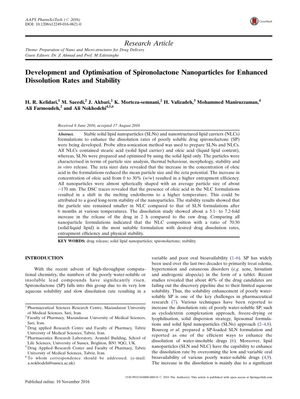Development and Optimization of Spironolactone Nanoparticles for Enhanced Dissolution Rates and Stability
November 2016
in “
Aaps Pharmscitech
”

TLDR Nanoparticles with more oleic acid improved the delivery and stability of the drug spironolactone.
The study from 2016 focused on enhancing the dissolution rates and stability of the poorly soluble drug spironolactone by developing solid lipid nanoparticles (SLNs) and nanostructured lipid carriers (NLCs). Researchers used probe ultrasonication to prepare and optimize these nanoparticles, which were then characterized for various properties. They discovered that increasing the concentration of oleic acid in the NLCs reduced the mean particle size and zeta potential while improving entrapment efficiency. The optimal NLC formulation had a 70:30 solid-to-liquid lipid ratio, leading to a 5.1- to 7.2-fold increase in drug release within 2 hours compared to the raw drug. After 6 months, NLCs demonstrated better stability than SLNs. The study concluded that NLCs with a higher oleic acid concentration are more effective for spironolactone delivery in terms of dissolution and stability. The study did not involve human subjects as it was focused on nanoparticle development.

